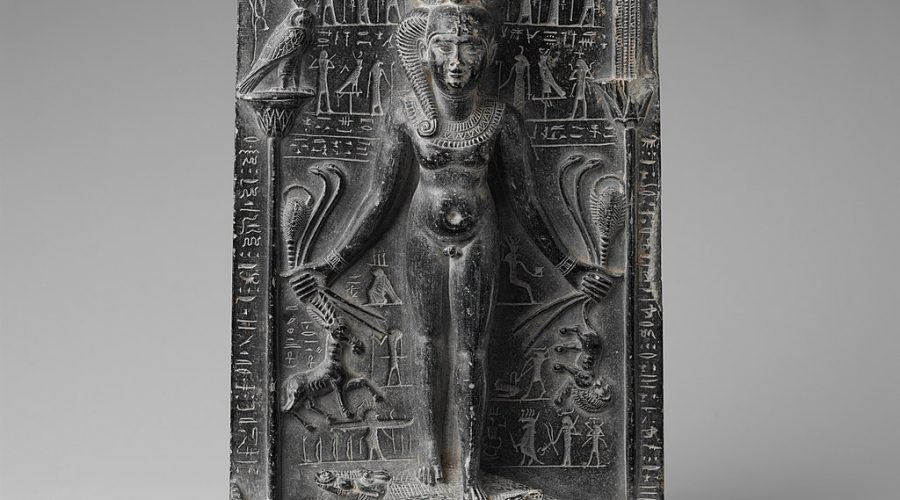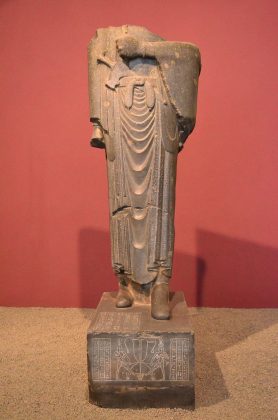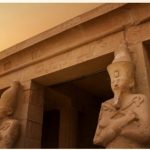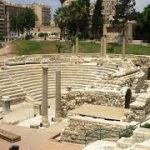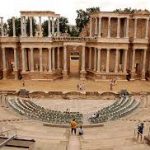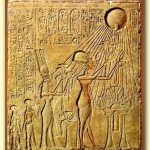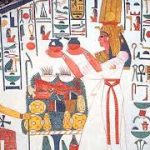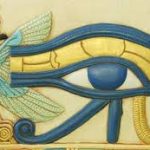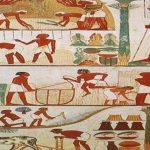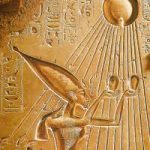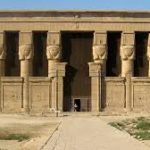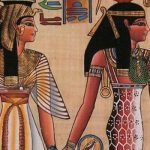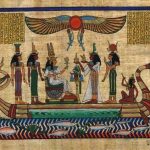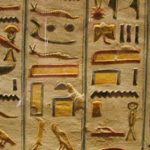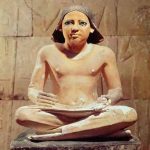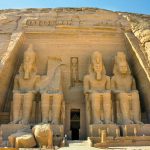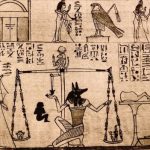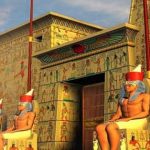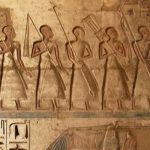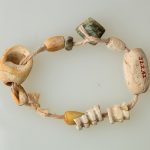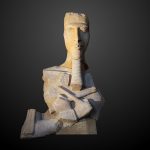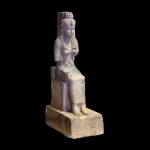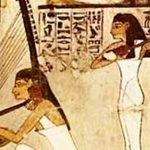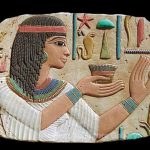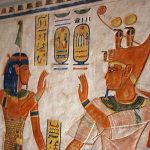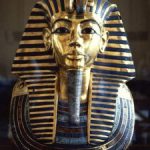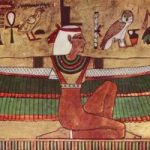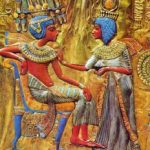Egyptian art is known for its distinctive figure convention used for the main figures in both relief and painting, with parted legs (where not seated) and head shown as seen from the side, but the torso seen as from the front. The figures also have a standard set of proportions, measuring 18 “fists”from the ground to the hair-line on the forehead.This appears as early as the Narmer Palette from Dynasty I, but this idealized figure convention is not employed in the use of displaying minor figures shown engaged in some activity, such as captives and corpses.[39] Other conventions make statues of males darker than those of females. Very conventionalized portrait statues appear from as early as the Second Dynasty (before 2,780 BC),[40] and with the exception of the art of the Amarna period of Ahkenaten and some other periods such as the Twelfth Dynasty, the idealized features of rulers, like other Egyptian artistic conventions, changed little until the Greek conquest.[42] Egyptian art uses hierarchical proportions, where the size of figures indicates their relative importance. The gods or the divine pharaoh are usually larger than other figures while the figures of high officials or the tomb owner are usually smaller, and at the smallest scale are any servants, entertainers, animals, trees, and architectural details.

Symbolism[edit]
Symbolism pervaded Egyptian art and played an important role in establishing a sense of order. The pharaoh’s regalia, for example, represented his power to maintain order. Animals were also highly symbolic figures in Egyptian art. Some colors were expressive.[44]
The ancient Egyptian language had four basic color terms: kem (black), hedj (white/silver), wadj (green/blue) and desher (red/orange/yellow). Blue, for example, symbolized fertility, birth, and the life-giving waters of the Nile.[45] Blue and green were the colors of vegetation, and hence of rejuvenation. Osiris could be shown with green skin; in the 26th Dynasty, the faces of coffins were often colored green to assist in rebirth.
This color symbolism explains the popularity of turquoise and faience in funerary equipment. The use of black for royal figures similarly expressed the fertile alluvial soil[44] of the Nile from which Egypt was born, and carried connotations of fertility and regeneration. Hence statues of the king as Osiris often showed him with black skin. Black was also associated with the afterlife, and was the color of funerary deities such as Anubis.
Gold indicated divinity due to its unnatural appearance and association with precious materials.[44] Furthermore, gold was regarded by the ancient Egyptians as “the flesh of the god”.[46] Silver, referred to as “white gold” by the Egyptians, was likewise called “the bones of the god”.
Red, orange and yellow were ambivalent colors. They were, naturally, associated with the sun; red stones such as quartzite were favored for royal statues which stressed the solar aspects of kingship. Carnelian has similar symbolic associations in jewelry. Red ink was used to write important names on papyrus documents. Red was also the color of the deserts, and hence associated with Seth.

Materials
Egyptian faience, made from silica, found in form of quartz in sand, lime, and natron, produced relatively cheap and very attractive small objects in a variety of colors, and was used for a variety of types of objects including jewelry.[46] Ancient Egyptian glass goes back to very early Egyptian history but was at first very much a luxury material. In later periods it became common, and highly decorated small jars for perfume and other liquids are often found as grave goods.
Ancient Egyptians used steatite (some varieties were called soapstone) and carved small pieces of vases, amulets, images of deities, of animals and several other objects. Ancient Egyptian artists also discovered the art of covering pottery with enamel. Covering by enamel was also applied to some stone works. The color blue, first used in the very expensive imported stone lapis lazuli, was highly regarded in ancient Egypt, and the pigment Egyptian blue was widely used to color a variety of materials.


